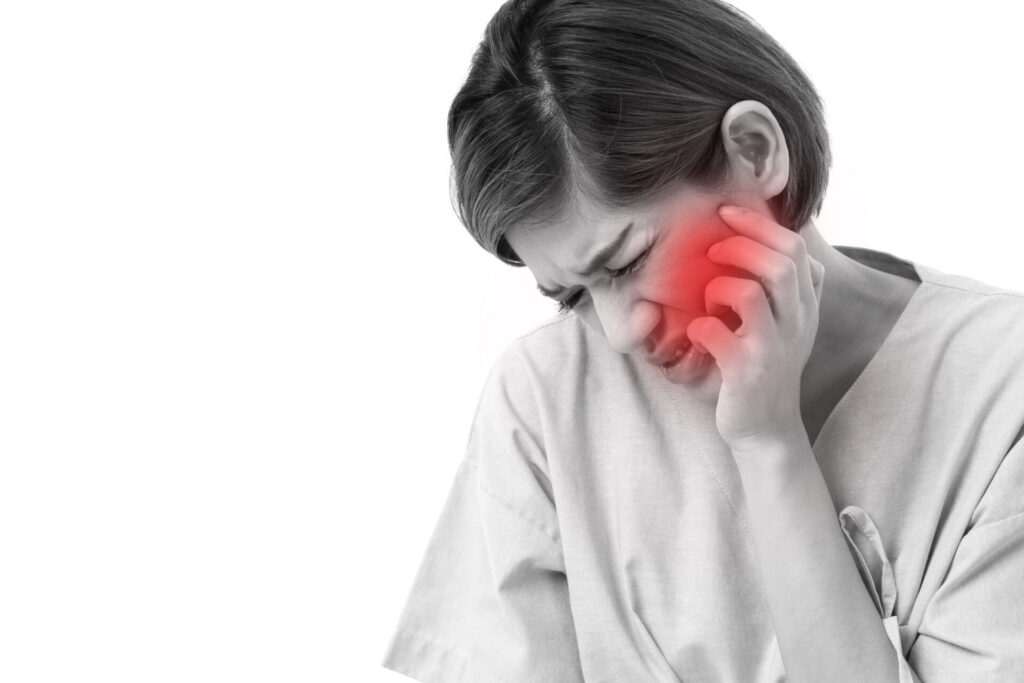A Guide To Chronic Pain: Diagnosis, Treatment, And Management
Chronic pain is a pervasive issue that has a pervasive impact on individuals in the United States and globally, impacting their daily lives and overall well-being. The journey to finding relief and effective management can be overwhelming, and medical science is still evolving in the diagnosis, treatment, and even classification of the different types of chronic pain due in large part to the personal nature of the condition. People experience pain as individuals, their care is also required to be individually calibrated.
With this guide, we want to shed light on the crucial aspects of chronic pain diagnosis, treatment, and management, while also addressing the obvious limits of neatly classifying something as broad and personal as constant pain.
By delving into the intricacies of this condition, we will uncover the various approaches to accurately diagnose chronic pain and explore the vast array of treatment options available.
From traditional methods to alternative therapies, this guide will equip you with the generalized knowledge needed to navigate the complex landscape of chronic pain management.
So, join us as we embark on this journey towards understanding and regaining control over chronic pain.

What is Chronic Pain?
Chronic pain is characterized by persistent pain that lasts for longer than three months and can be caused by various factors such as injury, illness, or an underlying medical condition. In rare cases, there might not be a physical or biological cause and could be the result of a psychiatric disorder.
There are also two terms one must understand when talking about chronic pain: acute pain and subacute pain.
Acute pain refers to a sudden and intense discomfort that is typically caused by a specific injury or illness, such as a broken bone or surgical procedure. It serves as a warning signal to the body, indicating the presence of potential harm or damage. Acute pain is usually short-lived and resolves once the underlying cause is treated or healed.
On the other hand, subacute pain is a milder and more persistent form of pain that lasts longer than acute pain but is not as long-lasting as chronic pain. It often occurs following the initial acute phase of an injury or illness and can persist for weeks or months. Subacute pain may be a result of incomplete healing or ongoing inflammation, and it can significantly impact a person’s daily life and functioning.
Prevalence of Chronic Pain in the United States
The prevalence of chronic pain in the United States is alarmingly high, affecting millions of individuals across the country.
According to the Centers for Disease Control and Prevention (CDC), approximately 20.4% of adults in the United States experience chronic pain, with other studies placing it higher at 25%.
It can affect people of all ages, but chronic pain in adults is the larger problem in the United States, with women also more likely to experience it than men. Up to 35% of primary care visits were because of chronic pain, which is why it’s considered one of the biggest drivers behind substantial healthcare costs in the country, leading also to decreased productivity and emotional distress.
Given its high prevalence, a sizeable amount of resources have been poured into researching it and prioritizing its diagnosis, treatment, and management to improve the well-being of individuals affected by this condition in the last two decades.
How to Diagnose Chronic Pain
To properly diagnose chronic pain, it is important to identify the signs and symptoms associated with it.
Common diagnostic tests such as imaging studies, blood tests, and nerve conduction studies may be used to determine the underlying cause.
Signs and Symptoms of Chronic Pain
Persistent discomfort lasting longer than six months is often a key indicator used in diagnosing chronic pain. However, it is important to note that it can manifest in various ways and may differ from person to person.
Here are some common signs and symptoms to look out for:
1. Consistent
It must be pain severe and recurring enough that it persists beyond the expected healing time of an injury or illness.
2. Location
It can occur in different parts of the body, such as the back, joints, muscles, or head.
3. Intensity
Persistent pain that ranges from mild to severe, affecting daily activities and quality of life.
4. Associated symptoms
Individuals with chronic pain may also experience fatigue, sleep disturbances, mood changes, and reduced mobility.
Recognizing these signs and symptoms can help healthcare professionals and individuals understand and manage chronic pain conditions effectively. Proper diagnosis and understanding of the type of pain are crucial steps toward developing an appropriate chronic pain management plan.
Common Chronic Pain Diagnostic Tests
When diagnosing, healthcare professionals commonly utilize a variety of diagnostic tests to determine the underlying cause and develop an effective treatment plan.
These tests are essential in identifying the specific condition or injury that is causing the chronic pain.
Some of the most common diagnostic tests include imaging studies such as X-rays, CT scans, and MRI scans, which can provide detailed images of the affected area to identify any abnormalities or damage.
Additionally, nerve conduction studies and electromyography (EMG) can be used to evaluate the electrical activity in the muscles and nerves, helping to identify any nerve damage or dysfunction, for example, if it’s a case of neuropathic pain.
Blood tests may also be conducted to analyze markers of inflammation or specific diseases.

What is Chronic Pain Syndrome?
Chronic Pain Syndrome (CPS) is a complex and debilitating condition characterized by persistent pain that lasts longer than expected healing time and significantly impacts an individual’s quality of life. It is a very recent term in the field of pain medicine.
CPS is a way to formalize the diagnosis and treatment of chronic non-cancer pain that persists after the injury or illness has passed and doesn’t have a clear source, condition, or cause. CPS then becomes a medical condition itself, often causing depression and anxiety, and might even make the pain worse.
It is estimated that up to 25% of people with chronic pain will go on to have CPS, affecting their daily lives.
The diagnosis of chronic pain syndrome comes if the duration of pain is more than three months with no underlying medical condition to fully explain it. CPS requires a thorough medical evaluation and consideration of the patient’s overall medical history.
Treatment involves a multidisciplinary approach that may include medications, physical therapy, psychological therapy, and lifestyle modifications. The goal is to reduce pain levels and improve overall functioning. But can also require a long-term comprehensive pain management approach that includes regular follow-up visits with healthcare providers, adherence to prescribed treatments, and active participation in self-care strategies such as stress management, relaxation techniques, and regular physical activity.
If not treated, CPS will have a significant impact on an individual’s physical, emotional, and social well-being. It may lead to limitations in daily activities, decreased productivity, increased risk of mental health conditions like depression, and ultimately worsening pain.
Therefore, comprehensive management should also address the psychological and social aspects of the condition.
Common Causes of Chronic Pain
Chronic pain can have a complex and multifactorial nature, and sometimes, the exact cause may not be easily identifiable and can even transform into chronic pain syndrome in cases.
Nonetheless, the most common sources of chronic pain that can be hard to relieve are the following:
- Injury or trauma: A result of previous injuries, such as fractures, sprains, or surgeries.
- Medical conditions: Certain medical conditions can lead to chronic pain in adults, including arthritis, fibromyalgia, multiple sclerosis, endometriosis, and chronic fatigue syndrome.
- Nerve damage: Nerve damage or neuropathy can be painful conditions. This can occur due to conditions like diabetic neuropathy, postherpetic neuralgia (shingles), or nerve compression syndromes.
- Inflammation: Chronic inflammation in the body, such as in conditions like rheumatoid arthritis or inflammatory bowel disease that leads to abdominal pain.
- Musculoskeletal issues: Chronic pain can result from problems with the muscles, bones, joints, or connective tissues, such as back or neck pain or osteoarthritis. Bruxism or temporomandibular joint disorder (TMJ) are examples of issues like these that can evolve into chronic pain.
- Psychological factors: Emotional stress, anxiety, depression, psychiatric disorders, or past traumatic experiences can create chronic non-cancer pain or worsen the perception of pain.
- Autoimmune diseases: Conditions like lupus, rheumatoid arthritis, or multiple sclerosis can cause chronic pain due to the immune system attacking healthy tissues.
- Post-surgical pain: After a surgical procedure, many post-surgical patients with pain will continue with it and develop postoperative pain.
Types of Pain
Types of pain can vary in their origin and characteristics, and understanding the different types of pain is crucial in providing appropriate diagnosis and treatment for individuals experiencing chronic pain.
Nociceptive Pain
Nociceptive pain refers to the type of pain that arises from the activation of specialized nerve fibers, known as nociceptors, in response to actual or potential tissue damage. This pain is typically localized and characterized by a sharp, throbbing, or aching sensation.
Nociceptive pain serves as a protective mechanism, warning the body of potential harm and prompting appropriate responses to prevent further injury. It can be caused by various stimuli, such as mechanical force, extreme temperatures, or chemical irritants, and is often associated with acute injuries, inflammation, or surgical procedures.
Nociceptive pain encompasses two main types: musculoskeletal pain and inflammatory pain.

Musculoskeletal Pain
Musculoskeletal pain refers to pain that originates from the muscles, bones, tendons, ligaments, or other structures of the musculoskeletal system. It can manifest as a dull ache, sharp stabbing feeling, or aching discomfort in the affected area.
Chronic musculoskeletal pain can be caused by a variety of factors, including injury, overuse, inflammation, or underlying medical conditions such as arthritis or fibromyalgia. It can significantly impact a person’s quality of life, causing limitations in physical activity, sleep disturbances, and emotional distress.
Treatment for chronic musculoskeletal pain often involves a multidisciplinary approach, combining medication (like opioid pain medication or NSAIDs), physical therapy, exercise, and psychological interventions.
The goal is to manage pain, improve function, and enhance overall well-being. However, finding the right treatment plan may require trial and error, as different approaches work for different individuals.
Inflammatory Pain
Inflammatory pain occurs as a result of inflammation in the body. It is typically characterized by redness, swelling, and heat in the affected area. Inflammatory pain can be caused by various factors such as injury, infection, or autoimmune disorders like arthritis.
When inflammation occurs, the body releases chemicals that stimulate nerve endings and cause pain.
It is often described as throbbing, aching, or sharp. Inflammatory pain can be acute, lasting for a short period of time, or chronic, persisting for a longer duration. Treatment often involves addressing the underlying cause of inflammation, such as using anti-inflammatory medications, physical therapy, or lifestyle modifications.
Treatment options may include nonsteroidal anti-inflammatory drugs (NSAIDs), corticosteroids, physical therapy, and lifestyle modifications.
Neuropathic Pain
Neuropathic pain, characterized by abnormal sensory processing in the nervous system, poses unique challenges in the diagnosis, treatment, and management of chronic pain. Chronic pain patients experiencing neuropathic pain may have difficulty finding relief due to its complex nature.
Here are four important points to understand about neuropathic pain:
- Diagnosis
Accurate diagnosis of neuropathic pain requires a comprehensive evaluation of the patient’s medical history, symptoms, and physical examination. Specialized tests, such as nerve conduction studies or imaging, may also be necessary to identify the underlying cause.
- Treatment
The goal of treatment for neuropathic pain is to alleviate symptoms and improve the patient’s quality of life. This may involve a multimodal approach, including medications, physical therapy, nerve blocks, and psychological interventions.
- Management
Effective management of neuropathic pain involves addressing both the physical and emotional aspects of the condition. This may include lifestyle modifications, stress reduction techniques, and support from a multidisciplinary team of healthcare professionals.
- Ongoing care
Neuropathic pain is often a chronic condition that requires long-term management. Regular follow-up appointments and open communication with healthcare providers are crucial for adjusting treatment plans and ensuring optimal control.
Central Sensitization
Central sensitization is a type of pain that involves the amplification of pain signals in the central nervous system. It occurs when the nerves in the spinal cord and brain become hypersensitive, causing them to overreact to normal stimuli. This can lead to a variety of symptoms, including increased pain intensity, heightened sensitivity to touch, and difficulty with normal movement.
Psychogenic
Often also referred to as psychosomatic pain, it is believed to be primarily influenced by psychological factors rather than physical causes. It is characterized by persistent pain that does not have a clear physiological explanation and, along with idiopathic pain, is most closely linked with CPS.
Individuals experiencing psychogenic pain may have undergone thorough medical evaluations, but no underlying physical cause can be identified. Instead, this chronic pain condition is thought to stem from emotional or psychological issues.
The diagnosis of psychogenic pain is challenging and requires ruling out all other sources. Effective treatment from health care providers will be in the form of comprehensive pain management, which might include behavioral therapy and counseling.
Idiopathic
Idiopathic pain also arises without a known cause or specific underlying condition. It is a challenging type of chronic pain because the origin and mechanism of it are not clearly understood. Diagnosis involves extensive medical evaluations to rule out other possible causes. Doctors often rely on a thorough medical history, physical examination, and diagnostic tests to exclude any identifiable causes.
Chronic Pain Management and Treatment
When it comes to managing chronic pain conditions, there are two main approaches: nonpharmacologic therapies and pharmacologic therapies.
Both approaches have their merits and are often used in combination to provide the most effective pain management for chronic pain patients.
Nonpharmacologic Therapies
Nonpharmacologic therapies can be used for chronic pain management and treatment in most cases of centralized, idiopathic, or neuropathic pain and some nociceptive pain. However, chronic non-cancer pain can be best relieved by medication. Nonetheless, nonpharmacologic therapies can be applied in any case of long-term pain as part of a comprehensive and holistic treatment of pain.
Heat and cold therapy
Heat and cold therapy are commonly used as an effective nonpharmacologic treatment of chronic, acute pain. Heat therapy helps to increase blood flow, relax muscles, and reduce severe pain and stiffness. It is especially beneficial for conditions like arthritis, muscle strains, and tension headaches, and examples of it are applying warm compresses or taking warm baths.
On the other hand, cold therapy, like ice packs or cold showers, helps to numb the area, reduce inflammation, and alleviate severe pain. It is often used for acute injuries, such as sprains or swelling.

Both heat and cold therapy can provide temporary relief and can be used interchangeably depending on the type of pain and individual preference.
Cognitive behavioral therapy
Cognitive behavioral therapy (CBT) is a widely recognized nonpharmacologic therapy used in the management and treatment of chronic or subacute pain.
CBT focuses on the relationship between thoughts, feelings, and behaviors, aiming to change negative patterns and promote positive coping strategies.
Individuals with chronic pain use CBT to identify and challenge unhelpful beliefs, develop effective pain management strategies, and improve their overall quality of life.
CBT is often used in conjunction with other treatments to provide a comprehensive approach to chronic pain management and has shown promising results in reducing pain severity and improving function.
Relaxation therapy
Relaxation therapy is a nonpharmacologic approach used in the management and treatment of chronic pain, offering individuals effective techniques to promote relaxation and alleviate pain symptoms.
It can achieve this through deep breathing techniques and exercises, which help reduce muscle tension and promote relaxation, or progressive muscle relaxation itself, where patients learn to relax different muscle groups. There are also guided imagery techniques (imagining calming and pleasant images) and mindfulness meditation, which aid the patient in coping with chronic pain.
Biofeedback
Biofeedback is a technique that involves using electronic devices to monitor and provide feedback on physiological processes such as heart rate, blood pressure, and muscle tension.
By learning to control these processes, individuals with chronic or subacute pain can reduce their symptoms and improve their overall well-being.
Biofeedback can be used as both a diagnostic tool and a treatment modality in the management of chronic pain. It’s also helpful in the management of bruxism as well.
Other
Many other nonpharmacologic therapies, when used in conjunction with pharmacologic treatments, can provide relief and improve the quality of life for individuals living with chronic pain. There are yoga, tai chi, exercise therapy, acupuncture, and other alternative therapies that can help the individual manage their pain, especially neuropathic pain, and even reduce it to a minimal presence.
These therapies can be especially beneficial for individuals who also suffer from depression or a history of addiction, as they can address both the physical pain and the emotional well-being.
However, it is crucial to weigh the potential benefits against the risks and consider the available evidence and guidelines to make informed decisions about nonpharmacologic therapies.
Pharmacologic Therapies
In the realm of pharmacologic therapies for chronic pain management and treatment, there are several options to consider, with a predominance of opioid medication and nonopioid therapy or medications, although there are several other options.
Each of these approaches offers unique benefits and important considerations, especially in the case of long-term opioid therapy. The choice of treatment should be tailored to the individual patient’s needs and circumstances.
Opioid Medication
The use of opioid medication is a common pharmacologic therapy for the management and treatment of chronic pain. When considering opioid pain medication as a treatment option, it is important to understand the benefits of opioid therapy and its potential risks.
Among the main benefits of opioid therapy is its undeniable effectiveness. Opioid pain medication can provide significant relief for individuals with chronic pain conditions, especially in cases of severe pain from tissue damage, inflammation, or other trauma that need time to heal. The benefit of opioid therapy has never been in doubt in terms of effectiveness, as opiates work by binding to specific receptors in the brain and spinal cord, blocking pain signals, and reducing the perception of pain. This can vastly improve the quality of life for individuals with chronic pain syndrome or subacute pain, allowing them to engage in daily activities and regain functionality.
Another benefit of prescribed opioid medication is the ability to provide long-lasting pain relief. Unlike some nonopioid therapy, opioids can provide relief for extended periods of time, allowing individuals to experience a significant reduction in pain symptoms, which can be particularly beneficial for individuals with chronic conditions such as cancer or degenerative diseases who require continuous pain management.
Opioid pain medications can also help alleviate the emotional and psychological distress often associated with CPS, improving overall well-being and mental health. Opioids may cause side effects such as drowsiness, constipation, and nausea. Close monitoring and management of these effects are crucial.

Risks of Chronic Opioid Therapy
Prolonged use of opioid pain medication can lead to substance use disorders and addiction, as shown by the recent opioid epidemic in the United States and elsewhere, which is the main reason why they are no longer recommended as first-line therapy. It is essential to follow a carefully monitored treatment plan in any long-term opioid therapy and communicate openly with healthcare providers to help prevent any risk and make informed decisions about managing chronic pain.
If any of these risks or effects present themselves, primary care providers or pain management specialists have to seriously question the continuation of opioid therapy on patients.
- Addiction Risk for Opioid Use
Opioids are highly addictive drugs that can lead to physical dependence even when taken as prescribed. Prolonged use of these medications increases the likelihood of developing a tolerance, leading to the need for higher daily opioid dosage to achieve the same relief. This can ultimately result in addiction, making it challenging to discontinue opioid use.
- Risk for Opioid Overdose or Respiratory Depression
The decision for chronic opioid therapy also should consider the risk of suppressing the central nervous system, which then slows down the breathing and heart rate. The effect is either respiratory depression or, more severely, overdose, and is a direct consequence of taking higher doses than prescribed or combining opioids with other substances, such as alcohol or sedatives. Respiratory depression or overdose is a life-threatening condition highlighted in recent years by the opioid crisis that was a result of misuse, overprescription, and abuse of opioids for pain.
- Impaired Cognition
Among the other risks of opioid therapy are drowsiness, confusion, and impaired cognitive function. This can interfere with daily activities, including driving or operating machinery, increasing the risk of accidents and injuries. Furthermore, cognitive impairment can affect one’s ability to concentrate, remember things, and perform tasks effectively.
- Constipation and gastrointestinal issues
One of the most underreported risks of opioid therapy is the slowdown of bowel movements, which can cause severe constipation. Chronic use may lead to more serious complications like bowel obstruction or perforation. Opioids for pain can cause nausea, dry mouth, vomiting, and stomach or abdominal pain, further impacting a person’s overall well-being and quality of life.
- Hormonal imbalances and sexual dysfunction
Long-term opioid use can disrupt the body’s natural hormone production, leading to hormonal imbalances. This can result in decreased libido, infertility, and sexual dysfunction, affecting both physical and emotional well-being.
- Increased risk of falls and fractures
Long-term opioid therapy can also cause dizziness, lightheadedness, and impaired balance, increasing the risk of falls and fractures, especially in older adults. Chronic pain already affects mobility and stability, and adding the side effects of opioids can further compromise a person’s physical safety.
- Interactions with other medications
This is one of the major risks of opioid therapy, as it can interact with other medications, including antidepressants, sedatives, and benzodiazepines, intensifying their effects and potentially leading to dangerous interactions. It is crucial to inform healthcare providers about all medications being taken to avoid harmful drug interactions and in some cases, determine whether it is better to switch to a nonopioid therapy.
- Social and psychological consequences
Patients with heavy opioid use in their history have been found to suffer from profound social and psychological consequences. It can lead to isolation, strained relationships, financial difficulties, and mental health issues such as depression and anxiety. The stigma associated with opioid use can also contribute to feelings of shame and guilt, further exacerbating the psychological impact.
Given the significant risks associated with opioid pain medications for chronic pain management, it is essential to explore alternative pharmacologic treatments or nonpharmacologic treatments like physical therapy, cognitive-behavioral therapy, and interventional procedures.
The patient, primary care clinicians, and pain specialists have to weigh the balance of benefits and risks when it comes to effectively managing chronic pain with opioid pain medications.
NSAIDs or Nonopioid Analgesics
NSAIDs and nonopioid analgesics are commonly utilized pharmacologic therapies for the management and treatment of chronic pain when the risks of opioid therapy are too high. In fact, both the American Pain Society (APS) and the American Academy of Family Physicians (AAFP) now recommend NSAIDs as either first-line therapy for pain management as alternatives to opioids or in conjunction with a reduced dosage or dependency on opioid therapy.
NSAIDs, or nonsteroidal anti-inflammatory drugs, help reduce inflammation and relieve pain. They are commonly used to treat conditions such as arthritis, menstrual cramps, and headaches.
Nonopioid analgesics, on the other hand, are medications that provide pain relief without the risk of addiction or dependence associated with opioids.
Topical Agents
Topical agents are valuable pharmacologic therapies for the management and treatment of chronic pain. These agents, like topical lidocaine, can provide localized relief and reduce the need for systemic medications.
Topical agents can be applied directly to the affected area, providing targeted relief where it is needed most, and compared to oral medications, topical agents have a lower risk of systemic side effects, making them a safer option for long-term use. They can reduce pain and inflammation and improve mobility and functionality, which allows individuals to better engage in daily activities. Topical lidocaine, for example, has been shown to be a very effective second-line treatment for neuropathic pain, especially when wanting to avoid oral opioid pain medications.
They offer a non-invasive approach to pain management, avoiding the potential risks associated with long-term opioid therapy and invasive procedures or surgeries.
Who Can Treat Chronic Pain?
When it comes to treating chronic pain, there are several options available, which all start with either your primary care setting or directly to a pain specialist after your primary care clinician was unable to determine the cause of your pain immediately.
Primary Care Provider
Primary care clinicians play a pivotal role in diagnosing, treating, and managing chronic pain for many patients. They provide comprehensive care and are often the first point of contact for individuals seeking relief from chronic pain.
Primary care clinicians carry out thorough assessments, review medical history and clinical guidelines, and perform necessary tests to determine the cause of the pain, and coordinate the overall treatment plan involving other specialists if needed. They can prescribe medications, recommend physical therapy, and provide referrals for additional therapies.
They can also address acute pain conditions that may arise alongside chronic pain. They can offer immediate interventions to alleviate it and prevent it from worsening.
A Pain Management Specialist or Pain Clinic or Center
A specialist in the medical field is often required to diagnose and treat the underlying conditions causing chronic pain.

These specialists, such as pain management physicians or neurologists, have specific expertise in the diagnosis and treatment of chronic pain through a comprehensive pain management approach. They are knowledgeable about the various pharmacologic treatments and nonpharmacologic treatments available and can provide appropriate recommendations based on individual needs.
At a pain clinic or center, patients have access to a range of treatment options tailored to their specific needs. This may include medication management, physical therapy, occupational therapy, psychological counseling, and alternative therapies such as acupuncture or biofeedback. The multidisciplinary approach allows for a holistic and integrated approach to managing chronic pain, addressing both the physical and emotional aspects of the condition.
Pain management specialists can also help determine the appropriate daily dosages of pain medications and other substances, ensuring that patients receive optimal relief while minimizing potential side effects or risks.
The clinics also often have access to the latest advancements in pain management techniques and technologies, ensuring that patients receive the most effective and up-to-date care possible.
The Importance of Health Care Providers Taking the Patient's Chronic Pain Seriously
Chronic pain is a complex and debilitating condition that demands the utmost attention and empathy from healthcare providers. Primary care providers must take the patient’s chronic pain seriously because it significantly affects their quality of life. Patients with chronic pain often face physical, emotional, and social challenges that can be overwhelming.
By acknowledging and validating their pain, healthcare providers can establish trust and build a therapeutic relationship with their patients. Taking chronic pain seriously also involves conducting a thorough assessment, including a comprehensive medical history, physical examination, evidence-based recommendations, and diagnostic tests when necessary. This enables health care providers to accurately diagnose the underlying cause of the pain and develop an individualized treatment plan.
Providers should actively listen to their patients, offer education about the perception of pain, medications, substance use disorders, and management strategies, and offer continuous support throughout their journey.
By doing so, providers can make a positive impact on their patients’ lives and help them regain control over their pain.

